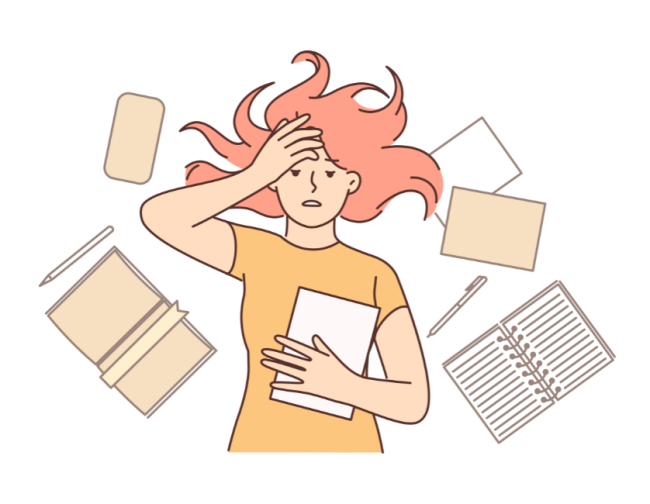You have /5 articles left.
Sign up for a free account or log in.

Alphavector
I began my role as dean of the College of Arts & Sciences at Georgetown University shortly after we emerged from the instructional Zoom world of the pandemic. When I first began informally meeting with students on campus, they told me that one of the hardest things they dealt with was the perceived “stress culture,” which they defined as a constant state of seeing who could be “the most stressed out.”
This cannot be a healthy culture for learning. And students at Georgetown aren’t alone.
America is experiencing an escalating mental-health crisis among college-age youth. Almost three-fourths of students report experiencing moderate or serious psychological distress, according to a recent survey from the American College Health Association.
The alarm bells are sounding. It is imperative that we listen and respond.
It is not a coincidence that this mental health crisis is happening at precisely the same time we are devaluing intellectual exploration and a liberal arts education. In 2020, just 4 percent of college graduates majored in English, foreign languages and literatures, history, or philosophy.
The increasingly public push against a liberal arts education is separating students from their intrinsic motivations for learning and pushing them toward purely extrinsic factors in their choice of major. A wealth of research demonstrates that intrinsic motivation is a catalyst for learning; it is associated with deeper engagement, perseverance and a greater understanding of new material.
A liberal arts education, with its commitment to exposing students to disciplines across the arts, humanities, natural sciences and social sciences, is rooted in the practice of discernment, embracing intellectual exploration and knowledge in a highly personal and meaningful manner. Discernment is the process of seriously pondering and reflecting upon whom you are supposed to be and what you are supposed to do. It is fundamentally about searching for your personal path and purpose in life.
I went to Yale University as an undergraduate with lots of financial aid, work-study jobs and a full dose of impostor syndrome. Back then, my immigrant parents did not understand how I would go to a university for four years and not graduate as “something”—a doctor or a lawyer. At 18, I explained to my parents that this was the American educational system. Today, as the dean of a liberal arts college, I am a firm advocate for this educational system that provides students with the freedom to explore their intellectual interests and career options in law and medicine, and also in the multiplicity of fields and careers that many 18-year-olds may not know exist.
Fortunately, our students are smart and creative and, when confronted with the resistance to the liberal arts, they push back. It is what they are doing when they double major and minor in the humanities next to their ostensibly high-paying primary majors. Many students tell me that they are majoring in a field, like economics, for their parents and to prepare themselves for a high-paying job after they graduate.
However, these same students double major or minor in classics, English, French or Spanish. In the College of Arts & Sciences at Georgetown, about 76 percent of our undergraduates have a second major or a minor—they often define these as what they study for themselves, to satisfy their curiosity, interests and passions. These second majors and minors are where their personal and intrinsic motivations lead them.
Attacks on liberal arts education are nothing less than roadblocks, prohibiting discernment and inhibiting young people from finding their own values, interests and purpose in life—factors that lead to happiness, well-being and a life filled with meaning and balance. Thus, liberal arts colleges are not a problem; rather, they are very much part of the solution to a rising epidemic tide of mental health problems among college-age youth.
There is a litany of factors affecting undergraduate mental health—rising social media usage, precarious world events and, of course, the lingering effects of the coronavirus pandemic that upended the routines, educational paths and lives of today’s college students. Yet even before the pandemic, college-age students were grappling with deteriorating mental health—nearly half reported they had “felt so depressed that it was difficult to function” within the last 12 months in the 2019 National College Health Assessment survey.
By encouraging students to pursue the breadth and reach of a liberal arts education, not only do we help tackle the mental health crisis spreading across college campuses, but we also better prepare and support young adults to become dynamic, motivated and courageous thinkers and problem-solvers.




